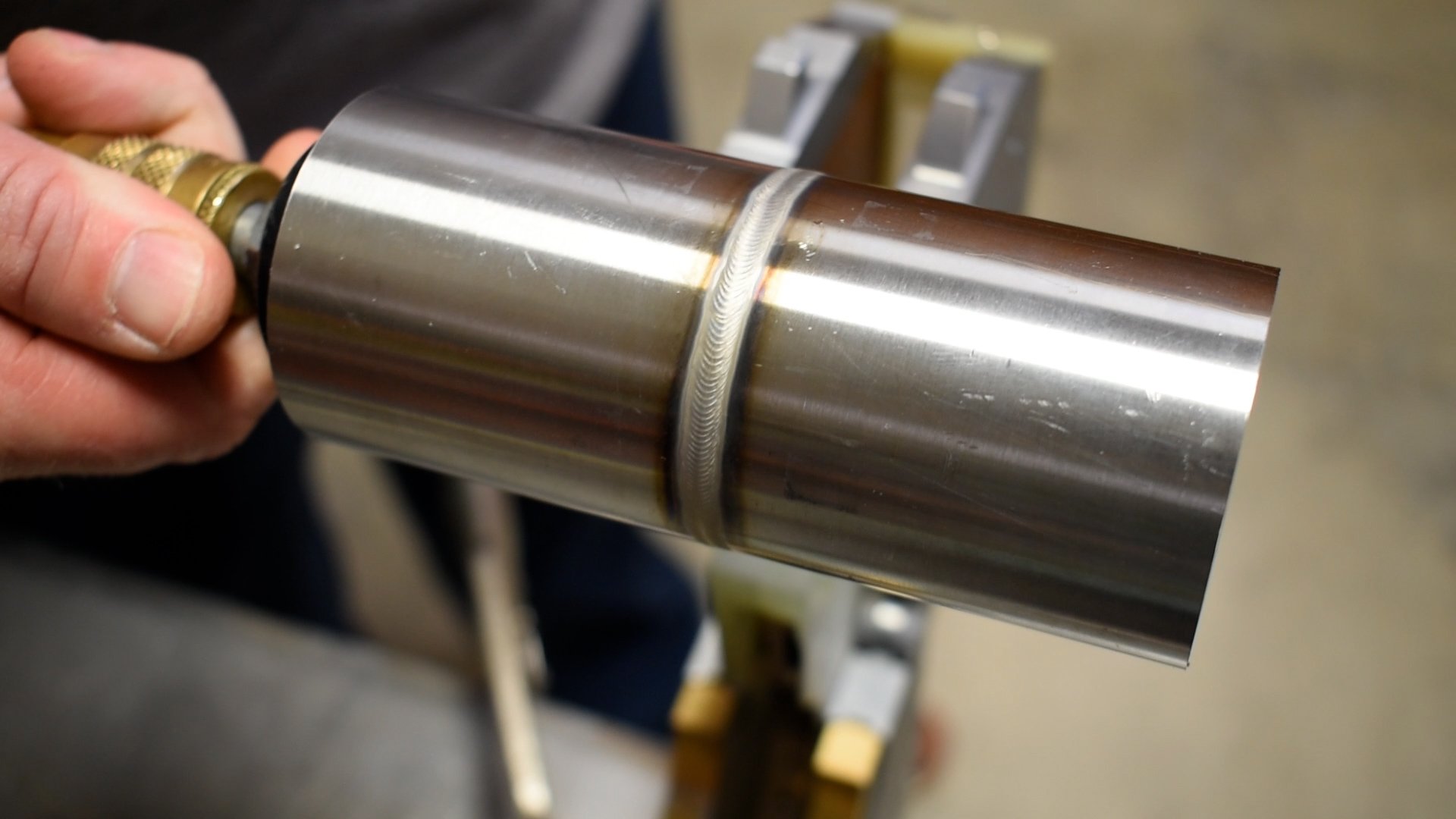Preventing Weld Undercut: Proven Methods Every Welder Need To Know
Wiki Article
Essential Tips for Welders: Preventing Undercut Welding and Ensuring Stronger Weld Joints
In the realm of welding, accomplishing solid and durable weld joints is the foundation of generating high-grade job. One typical challenge that welders frequently come across is undercut welding, which can jeopardize the integrity of the weld joint.
Understanding Undercut Welding
Undercut welding is a typical welding problem that happens when the weld steel fails to appropriately fill the groove and leads to a groove-like anxiety along the weld bead. This issue damages the weld joint, making it vulnerable to breaking and failure under stress and anxiety. Damaging can be triggered by various variables, including extreme welding existing, high welding rate, inappropriate electrode angle, inaccurate electrode dimension, and bad welding technique.One of the main factors for undercut welding is a discrepancy in between the welding current and the welding rate. If the welding current is as well high or the welding rate is too fast, the weld steel may not adequately fill up the groove, causing damaging. Furthermore, using an electrode that is as well large can result in a similar result, as the excess steel can not correctly move right into the groove.
To avoid undercut welding, welders need to guarantee they are using the proper welding specifications, maintain an appropriate electrode angle, pick the ideal electrode size, and practice correct welding strategies. By addressing these aspects, welders can minimize the danger of damaging and create more powerful, extra reliable weld joints.
Correct Welding Method
Efficient welding strategy plays an essential role in guaranteeing the quality and integrity of weld joints. One fundamental aspect of proper welding strategy is maintaining the appropriate angle and range in between the welding gun and the workpiece.Furthermore, a regular and stable hand motion is vital for developing solid and resilient weld joints. Welders ought to aim for smooth, uniform activities to guarantee also circulation of the weld product. Proper adjustment of the welding weapon and filler product is also vital to accomplishing optimal penetration and fusion.
Moreover, managing the warmth input and choosing the appropriate welding criteria based on the product being welded are crucial aspects in attaining high-grade welds - Preventing weld undercut. Welders need to follow the recommended setups provided by welding procedure requirements and change them as needed based upon the certain requirements of the project. By grasping correct welding techniques, welders can substantially boost the strength and integrity of their weld joints
Picking the Right Electrode
Maintaining the right angle and distance between the welding weapon and the work surface is essential when thinking about the relevance of selecting the appropriate electrode in welding applications. The choice of electrode plays an important duty in figuring out the top quality and stamina of the weld joint. Electrodes come in numerous kinds, each made for specific functions and materials.Firstly, choosing the proper electrode diameter is vital. Thinner electrodes are ideal for welding slim products, while thicker electrodes are much better for thicker materials and greater warmth applications. Matching the electrode diameter to the thickness of the workpiece helps achieve a well balanced weld.
Secondly, recognizing the product make-up of the electrode is vital. Different electrodes are developed for welding details materials like steel, stainless-steel, aluminum, or cast iron. Utilizing the proper electrode product makes certain great combination and reduces the threat of problems in the weld.
Lastly, taking into consideration the welding placement and strategy is critical when selecting the electrode kind. For example, certain electrodes are better suited for vertical or overhead welding placements, while others function well for level or straight positions. Selecting the appropriate electrode based on the welding strategy improves the overall weld quality and honesty.
Preparing the Base Steel
To make certain an effective welding process, what first steps should be taken when preparing the base metal for welding? Additionally, any existing weld material or residue from previous welding ought to be removed to make sure a tidy surface area for the brand-new weld.
Conducting Post-Weld Examinations

After performing these evaluations, welders must compare the results against industry standards and project requirements to ensure that the weld joint satisfies all essential requirements. Any type of discrepancies or insufficiencies found during the post-weld inspection ought to be immediately dealt with through ideal restorative actions to assure the weld's stability. By carefully doing post-weld examinations and quickly attending to any type of concerns, welders can support the top quality and reliability of their work, inevitably adding to the safety and long life of the bonded frameworks.
Final Thought

In conclusion, stopping undercut welding and making certain stronger weld joints call for a mix of correct welding technique, choosing the ideal electrode, preparing the base metal appropriately, and conducting post-weld examinations. By recognizing the root causes of undercut welding and carrying out the necessary safety measures, welders can create premium weld joints that meet industry requirements and ensure the structural integrity of the bonded parts.
Undercut welding is a typical welding flaw that takes place when the weld steel stops working to correctly load the groove and results in a groove-like depression along the weld bead (Preventing weld undercut). Damaging can be caused by various elements, consisting of extreme welding my blog present, high welding rate, incorrect electrode angle, wrong electrode dimension, and inadequate welding strategy
One of the primary reasons for undercut welding is a discrepancy in between the welding current and the welding speed. If the welding current is also high or the welding speed is as well quickly, the weld metal might not adequately fill the groove, leading to damaging.Maintaining the correct angle and range in between the welding weapon and the work surface is essential when considering the importance of selecting the best electrode in welding applications.
Report this wiki page